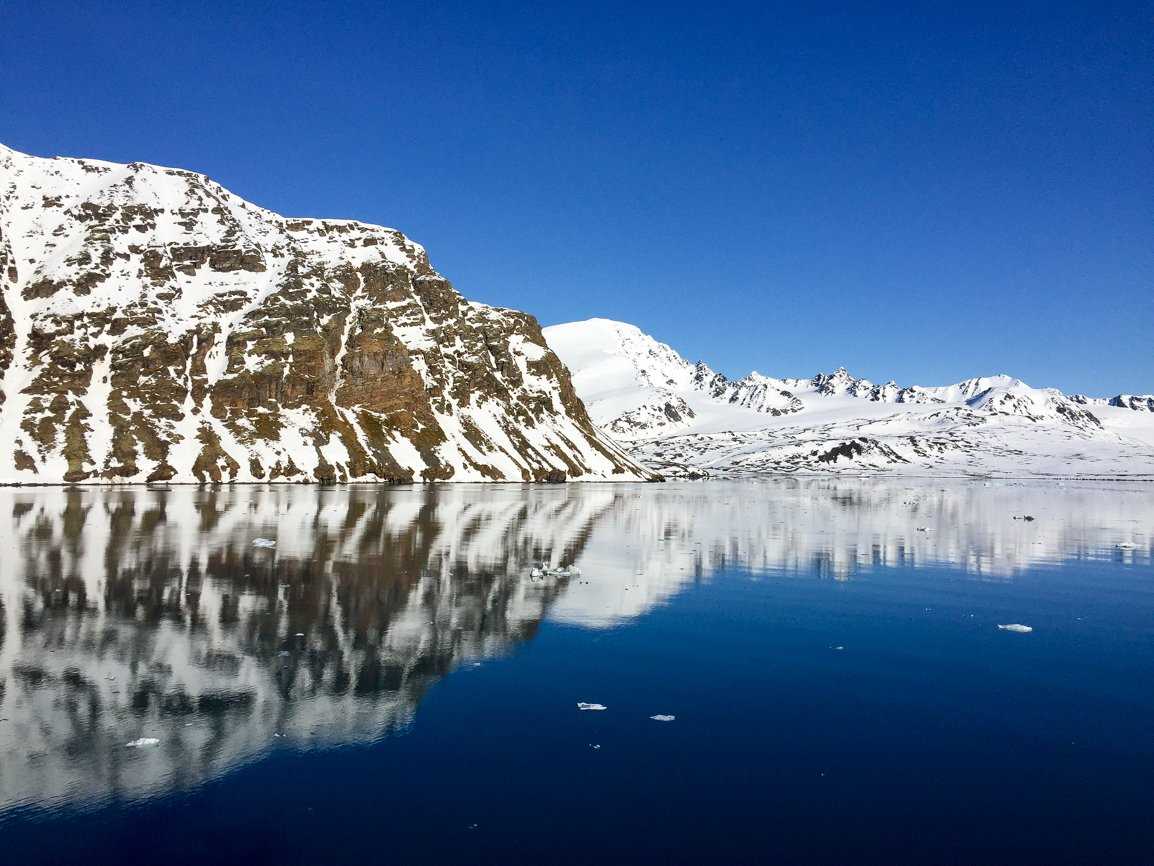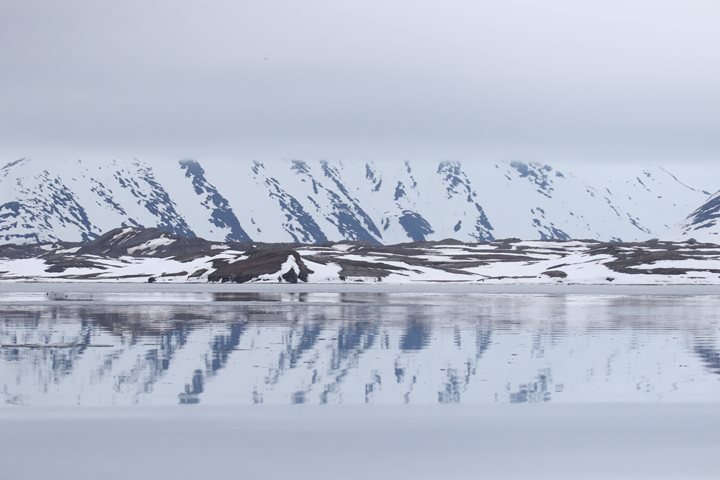The National Geographic Explorer made her way into the Krossfjorden area on the northwestern edge of Spitsbergen, and specifically Signehamna. The day was clear, calm and surprisingly warm, with temperatures reaching 50°F. The lack of winds made for some beautiful reflections in the channel. The still air allowed us all to hear the calls of Arctic Terns, the purring and churring of little auks as they flew across the bow in small flocks, and the deep rumbles of common eiders. After the guests had filled their morning with hikes, kayaking and Zodiac cruises in the area, the ship made her way up to the Lillehøøkbreen glacier. This glacier is famous for being an active glacier, which means it calves chunks of ice from its face on a regular basis. The groans and cracks from the glacier were bouncing around the end of the fjord, triggering oohs and aahs from the guests, who were eager to see a calving event.
During our fantastic Swedish-themed lunch we saw two calving events. After we’d eaten we headed out to the drop-off zone. This is where the Eurasian tectonic plate drops off to the deep Atlantic and across to the mid-Atlantic ridge. This creates rich upwellings in the ocean that spawns rich feeding grounds. This area is a good bet for sightings of cetaceans and other marine life, and we were not disappointed! The guests were treated to fantastic viewings of blue whales, fin whales, minke whales and a possible sei whale, all feeding in the same area. We also saw great skua, kittiwakes, and a few Puffins. After an hour of watching these magnificent of creatures the National Geographic Explorer set a course south to Longyearbyen, the last port of call before the guests, with heavy hearts, depart after an amazing week in the Arctic.







